The Chalet School in Exile
One of the things I most love about reading is its ability to surprise. Elinor M. Brent-Dyer's The Chalet School in exile is a great example of this. The Chalet school stories were a long series of boarding school novels for girls published between the mid-1920's and early 1970's. Set in an international girls' boarding school initially in the Austrian Tyrol, then Britain, and then the Swiss Alps, the stories follow the adventures of the girls at the school, and of the school's founder, Madge Bettany, and her extended family. They're generally pretty formulaic - you can virtually guarantee that in each volume there will be an accident, an on-the-edge of the seat will-she-or-won't-she-live? illness, and, as you would expect, all the normal sort of fun and games associated with school stories. The series was immensely popular, probably not least because of its exotic (for the time) settings, and the mix of nationalities involved in the stories.
I first started to read the books when I was in my teens, as my best-friend at the time, was absolutely dotty about them. They do have a certain charm that gets you reading even when they are rather unbelievable. However Chalet School in exile, which many fans, including myself, consider to be the best of the series, really is something quite special. There is a power to it that is quite astonishing - I hadn't realised until looking at the Amazon write-up (click on the title of this post to go through to it) that the novel had fallen foul of the censor at the time - having said which it doesn't surprise me at all.
A little background is essential. Brent-Dyer travelled to the Tyrol in the 1920's, visiting the pretty little village of Pertisau on Lake Achensee. It was here that she would set the Chalet School stories, changing some but not all of the names in the locality, so making it easily identifiable even today. It is believed that she visited Austria several times in the 1920's and '30's. Published in 1940, Exile starts with a certain level of tension. Set in 1938, just before the Anschluss, the senior management of the school are concerned as to what will happen should Germany annex Austria. Following the Anschluss there are some minor run-ins with local Nazis, these happenings however take a dramatic turn when some of the girls go on an innocent shopping trip to their local town. While there an elderly Jewish jeweller is tormented by a local mob, and is initially saved by the childrens' actions. As the crowd's mood grows ugly the children are forced to flee - we are later told that both the jeweller and his wife were killed or badly injured by the mob, as was the local priest, whose actions protected the schoolgirls from the crowd. There is then a tense and well-written passage following the childrens' flight from Austria, before the story re-opens in Guernsey.
What I find completely stunning about this story is the element about the Jewish jeweller. Brent-Dyer would certainly have had some knowledge of what was happening in Europe to the Jewish community, but the power of the writing suggests that she may have had some more intimate knowledge - possibly witnessing attacks on Jews herself while travelling in Austria. There's also an interesting little snippet later in the volume, when the party of schoolgirls are fleeing Austria; in order to put a party of Nazis off-the-track, one of the girls begs for alms, Romany-style, and gets whipped for her pains. Again, this suggests that Brent-Dyer was not only aware of Nazi-attitudes towards Jews but also towards gipsies. It has one of the most chilling descriptions of a mob gone mad I've ever read, a lot of this power comes from the fact that it's in a childrens' book - and an innocent school story at that, and you just don't expect to read that sort of thing there - there'd be nothing quite like it until Ian Serraillier's The Silver Sword written many years later, and this time written post-war with a full knowledge of what the Nazis had done.
Chalet school in exile is also a book that celebrates redemption, and the ability of a few people wanting to do good making a difference. There is evil in this book, undoubtedly, but Brent-Dyer never paints in terms of black and white, so there's a lot for children to take in and to think about in this novel. For its readers at the time this must have been quite a shocking read - it continues to shock. Above all it does what great books should do - it makes you think.
I first started to read the books when I was in my teens, as my best-friend at the time, was absolutely dotty about them. They do have a certain charm that gets you reading even when they are rather unbelievable. However Chalet School in exile, which many fans, including myself, consider to be the best of the series, really is something quite special. There is a power to it that is quite astonishing - I hadn't realised until looking at the Amazon write-up (click on the title of this post to go through to it) that the novel had fallen foul of the censor at the time - having said which it doesn't surprise me at all.
A little background is essential. Brent-Dyer travelled to the Tyrol in the 1920's, visiting the pretty little village of Pertisau on Lake Achensee. It was here that she would set the Chalet School stories, changing some but not all of the names in the locality, so making it easily identifiable even today. It is believed that she visited Austria several times in the 1920's and '30's. Published in 1940, Exile starts with a certain level of tension. Set in 1938, just before the Anschluss, the senior management of the school are concerned as to what will happen should Germany annex Austria. Following the Anschluss there are some minor run-ins with local Nazis, these happenings however take a dramatic turn when some of the girls go on an innocent shopping trip to their local town. While there an elderly Jewish jeweller is tormented by a local mob, and is initially saved by the childrens' actions. As the crowd's mood grows ugly the children are forced to flee - we are later told that both the jeweller and his wife were killed or badly injured by the mob, as was the local priest, whose actions protected the schoolgirls from the crowd. There is then a tense and well-written passage following the childrens' flight from Austria, before the story re-opens in Guernsey.
What I find completely stunning about this story is the element about the Jewish jeweller. Brent-Dyer would certainly have had some knowledge of what was happening in Europe to the Jewish community, but the power of the writing suggests that she may have had some more intimate knowledge - possibly witnessing attacks on Jews herself while travelling in Austria. There's also an interesting little snippet later in the volume, when the party of schoolgirls are fleeing Austria; in order to put a party of Nazis off-the-track, one of the girls begs for alms, Romany-style, and gets whipped for her pains. Again, this suggests that Brent-Dyer was not only aware of Nazi-attitudes towards Jews but also towards gipsies. It has one of the most chilling descriptions of a mob gone mad I've ever read, a lot of this power comes from the fact that it's in a childrens' book - and an innocent school story at that, and you just don't expect to read that sort of thing there - there'd be nothing quite like it until Ian Serraillier's The Silver Sword written many years later, and this time written post-war with a full knowledge of what the Nazis had done.
Chalet school in exile is also a book that celebrates redemption, and the ability of a few people wanting to do good making a difference. There is evil in this book, undoubtedly, but Brent-Dyer never paints in terms of black and white, so there's a lot for children to take in and to think about in this novel. For its readers at the time this must have been quite a shocking read - it continues to shock. Above all it does what great books should do - it makes you think.

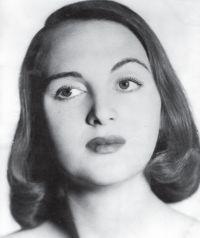
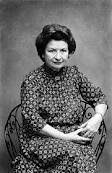

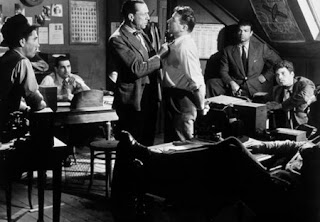

.jpeg)
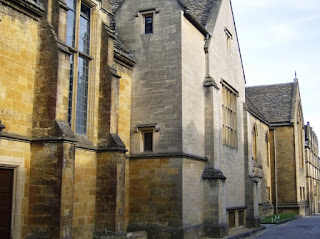
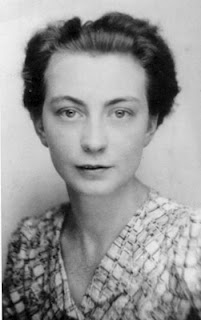
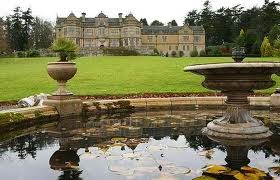
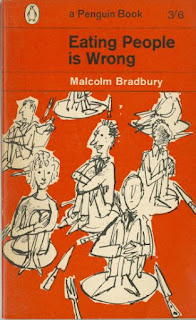
Comments